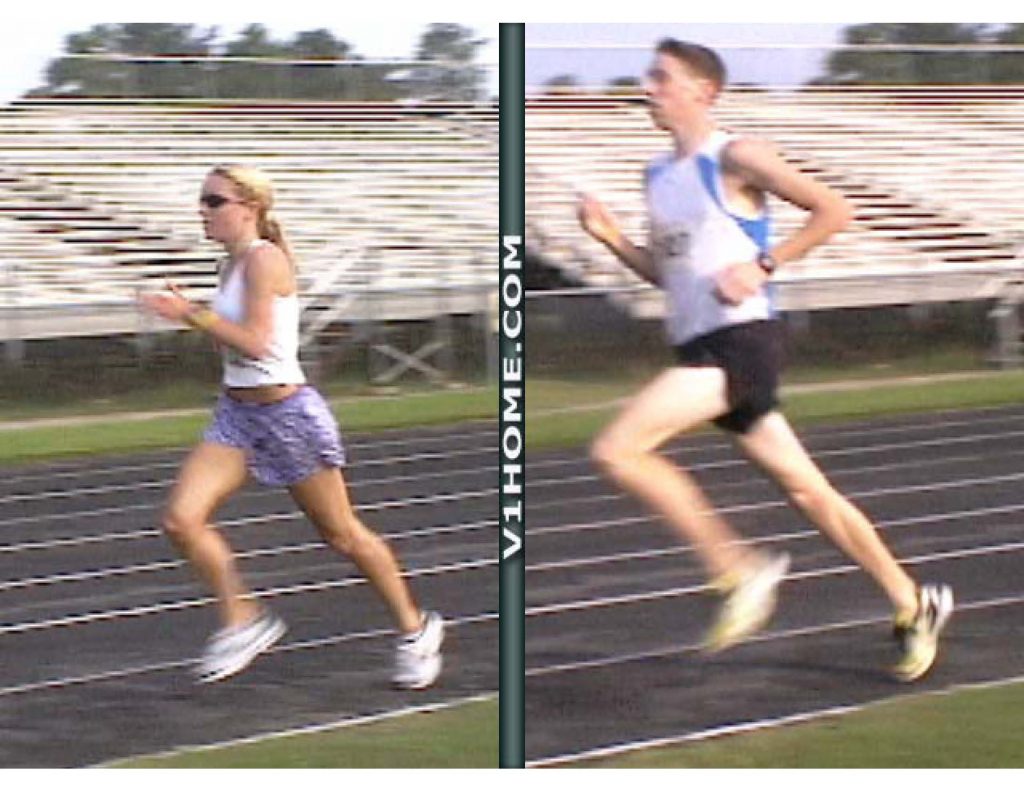Gait Retraining – Key Concepts

Gait retraining has become popular among avid runners and Physical Therapists. The proponents of gait retraining advocate if you improve the walking/running form you can walk/run faster, farther, and injury free.
Many questions remain regarding gait retraining. Who can benefit from gait retraining injured individuals, non-injured, or both (Heiderscheit, B 2011)? When is the best time to implement gait retraining? What should an individual change or modify about how they walk/run? Which cues should an individual use to improve walking/running form? What is the best type of feedback during practice, and how should feedback be applied? How long does it take to become proficient and comfortable with new walking/running form?
Obviously a great deal more research is needed to provide credible answers to these questions. In the meantime here are my thoughts regarding key concepts of gait retraining. These concepts are come from studying the research, and from using gait retraining as a primary intervention in helping clients with repetitive use injuries in the lower extremity over many years.
The best time to work on changing walking/running form is now: Making a conscious effort to change walking/running form can be physically stressful. Changing the way you walk/run is either going to increase or decrease the stress to the body? It is easier to make changes if all the parts are working correctly, mobile, stable, and strong – not currently injured. If one of your parts is injured changing form may be too stressful. However, if you have an injury the pain that occurs when walking/running can provide immediate feedback to help learn to modify the walking/running form.
Changing walking/running form does not occur quickly: Few studies available suggest that 12 to 16 weeks of gait retraining and practice are more of the norm rather than the exception. Be patient it can take a substantial amount of time and practice to change well established habits, and become comfortable with new movement skills.
Keep it simple stupid: There are a number of cues that have been successfully used in gait retraining including: walk/run softly; walk/run quietly, avoid heel strike when running; strike the ground with mid-foot first when running; lift knees higher; pick feet up quicker; step quickly with shorter steps, take more steps/minute (faster cadence); keep daylight between knees; avoid crossing the mid-line of the body at foot strike, and avoid up and down motion. Using one cue can result in positive effects up and down the chain. Request to “run softly or quiet” can result in change in foot strike, shorter stride, less up and down motion and foot being picked up off ground sooner. Pick one cue and use it as a mantra while walking/running.
Feedback and practice is important: What you look like walking/running requires that you see yourself walk/run. Video technology and software applications that allow play back in slow motion are helpful. Some individuals have a high degree of self-awareness or natural talent related to physical movement. Some individuals are as one of my mentors described are “motor morons”, lack talent to move effectively and efficiently. Guidence and coaching from experts can help determine which are the most important cue to work on first is. Experts can help minimize or avoid adverse effects or side effects which may occur from conscious effort to modify the manner of walking/running. Malcolm Gladwell says that it takes roughly 10,000 hours of practice to achieve mastery in a field. Perhaps it will take less time if the practice is done correctly rather than practicing the task incorrectly – seek feedback.
“One size does not fit all” - There is no single ideal walking/running form: Biomechanically efficient walking/running form can be defined, it will likely need to be tailored to the individual (Heiderscheit 2011). The packaged gait retraining programs, such as, Pose Technique or Chi Running assume everyone should run with the same identified form. Individual stature, physical condition, and experience vary a great deal. I think it is okay to allow and encourage individual differences. Some individuals have good walking/running form and do not need gait retraining.
Don’t take long steps/strides take more steps/strides per minute: Walking/running faster means more force, more energy (calories) is expended, step/stride length increases, and cadence (steps/strides per minute increases slightly. There is a growing body of evidence that longer steps/strides are related to increased risk of injury. Cadence training is useful in treating and preventing injury. A relatively small change 5% in steps per minute can have a large effect size on order of 15% to 20% change in forces. Energy
Gait Training can change walking/running form, and it may result in being able to walk/run farther, faster, injury free.
Damien Howell Physical Therapy – 804-647-9499 – Fax: 866-879-8591 At-Home, At Office, At Fitness Facility – I come to you, I do home visits Damien@damienhowellpt.com
